According to Salesforce’s research, 88% of customers say the experience a company provides is as important as its products or services. For many businesses, that experience begins with a phone number, often the first point of contact. Whether customers are dialing a Direct Inward Dialing (DID) number or a Toll-Free line, the choice shapes not just perception, but also your cost structure, support model, and technical stack.
The decision between DID and toll-free numbers isn’t about which one is objectively “better.” It’s about context. If you’re scaling customer support across countries, trying to establish a local presence without opening physical offices, or launching national marketing campaigns, each of these scenarios demands a different approach to voice infrastructure.
This guide breaks down everything that actually matters: cost differences, routing capabilities, user experience impact, and how each number type performs in international and multi-region strategies. It’s built to help you choose based on your operational reality, not on assumptions or vendor fluff..
Key Takeaways
- DID numbers enable local presence, trust, and flexible call routing across regions, ideal for global teams, support desks, and personalized outreach with lower long-term costs.
- Toll-free numbers boost reach and brand perception, particularly in national campaigns and centralized support, but come with higher per-minute costs and limited international accessibility.
- The right choice depends on your use case: toll-free suits marketing and mass access; DIDs suit regional trust, language-specific support, and agent-level control.
- Globally, DIDs scale more efficiently across countries, while toll-free requires careful planning due to inconsistent international availability and rising fraud risks.
- Smart companies blend both, toll-free for awareness and support, DIDs for regional personalization, aligning each number type with buyer journey stages and operational reality.
DID Numbers Demystified: What They Actually Do in a Modern Stack
While DID numbers are often described as “just local numbers,” that definition barely scratches the surface. In reality, they’ve become core infrastructure in distributed voice systems, powering cloud-based contact centers, decentralized teams, and SaaS onboarding workflows. They aren’t just endpoints for receiving calls, they’re programmable, flexible, and deeply integrated into how modern businesses run voice operations.
DID Numbers in Today’s Cloud Comms Environment
Modern DID provisioning looks nothing like the legacy telco setup. Businesses no longer need to tie every line to physical copper or maintain bulky PBX boxes in their server rooms. Instead, most DIDs are delivered over SIP trunks and managed through VoIP platforms or virtual cloud PBXs, all configured through a dashboard, not a data center.
Whether you’re routing inbound calls to a regional support pod, assigning unique numbers to sales reps, or provisioning temporary onboarding lines for enterprise clients, DIDs function as flexible routing anchors. Each number can map to a specific destination, an extension, a ring group, a time-of-day rule, or even a fallback voicemail system. That makes them ideal for companies managing multiple teams or service areas from a centralized system.
Take a remote-first SaaS firm with customers in 12 countries. Instead of spinning up costly local offices, they can assign local DID numbers in each region and route all of them back to one support team. Callers feel like they’re reaching someone nearby. The team handles everything from one place – no need for on-premise gear or regional carriers.
Hidden Strengths of DIDs
What makes DIDs especially valuable isn’t just their ability to accept inbound calls, it’s how they fit into complex business logic. You can tie a DID to a department, a product line, a territory, or even a single campaign. That allows much tighter control over call flow, reporting, and customer experience.
Local trust is another factor. When customers see a number that matches their own area code, or at least their region, they’re more likely to pick up. In contrast, unknown or generic numbers often go ignored. For companies doing outbound follow-ups, that difference directly impacts conversion rates.
There’s also operational value in the call mapping clarity DIDs offer. A finance department might have one number, a support queue another, and your CX team in London something else entirely. If a call volume spike happens, you’ll know where it’s coming from and why, without needing to sift through logs or guess based on call durations.
On the analytics side, DIDs give teams access to segmented reporting. You can track call metrics per number – ideal for A/B testing different marketing messages or assessing which team handles the highest volume. Platforms like DID Logic let you integrate this data into your reporting stack with minimal setup.
Toll-Free Numbers Revisited: Still Relevant, But Use With Precision
Toll-free numbers carry a lot of legacy weight. For decades, they’ve been synonymous with customer service lines, national hotlines, and enterprise helplines. But the way businesses use them has changed. In 2025, they’re no longer a default. They’re a tool, and like any tool, they need to be applied with purpose.
Toll-Free in 2025: When It’s Worth the Cost
Toll-free still works, just not for everything. When used intentionally, it can be an effective lever for reach, response, and perception. It’s particularly valuable in direct response campaigns, where a free call removes friction from a purchase or sign-up. A toll-free number also helps establish a nationwide footprint, especially for businesses operating across multiple time zones or without a brick-and-mortar presence.
From a branding standpoint, it creates a layer of polish. Vanity numbers are easier to recall, and customers often associate them with scale and credibility. But those benefits come with cost, and they’re only worth it when the number actually aligns with the purpose. A toll-free line answering routine calls from a single zip code? That’s not strategic spending.
The “free-to-call” appeal remains powerful. According to a study from Forrester, nearly 60% of consumers are more likely to reach out when they know the call won’t cost them anything. That kind of psychological nudge still matters, especially in high-stakes industries like finance, healthcare, or legal, where inbound trust needs to be earned quickly.
Strategic Risks of Toll-Free Overuse
The broad appeal of toll-free numbers also brings some specific drawbacks, especially when used without clear intent. A toll-free line lacks local identity, which can hurt conversion in regions where customers prefer to speak with businesses they perceive as “in the area.” That perception gap often results in lower answer rates, particularly for outbound calls.
Then there’s the issue of cost control. Toll-free numbers typically charge per minute, with rates that can climb quickly under high call volumes. For support-heavy operations, that cost difference adds up, especially when many of those calls could be handled locally or digitally.
Spam traffic is another growing concern. Fraudulent robocalls and spam calls often target toll-free numbers because they know the business foots the bill. Without adequate filtering or fraud detection, those costs become waste, and risk undermining the system’s value altogether.
Used well, toll-free numbers expand your reach. Used carelessly, they drain budgets and dilute your brand voice. That’s why it pays to treat them like a targeted asset, not a default option.
Quantitative Showdown: Cost, Reach, Routing, and UX Compared
Phone numbers don’t just shape how customers reach you – they shape your monthly bill, your routing flexibility, and how your team manages demand. Let’s break down the hard costs and operational trade-offs between DID and toll-free numbers.
Financial Implications by Business Type and Size
Pricing models for DID and toll-free numbers vary by provider, but the structure follows consistent patterns: DIDs are cheaper to operate at scale, while toll-free lines carry higher recurring and per-minute costs.
| Cost Category | DID Number (Avg.) | Toll-Free Number (Avg.) |
| Setup Fee | $0–$5 | $5–$30 |
| Monthly Number Fee | $1–$5 | $10–$30 |
| Inbound Per-Minute Cost | Included or < $0.01/min | $0.02–$0.10/min |
| Porting Fee (one-time) | ~$5–$10 | ~$15–$25 |
Here’s where it gets practical:
- A business running 50 support reps across 3 regions will typically save hundreds per month using local DIDs over toll-free. With local numbers, call costs are often bundled or billed at local rates. Toll-free charges, however, scale with usage, and fast.
- For inbound marketing campaigns, the story flips. When response rate is king, a single toll-free number can increase conversions despite higher call costs. Think about paid ads, billboards, or direct mail where one point of contact drives the call to action.
According to Statista, U.S. businesses spent over $600 million on toll-free services in 2023, with a growing share allocated to tracking marketing ROI via vanity numbers and dynamic call routing. That cost is only justifiable when attributed directly to revenue-generating leads.
DID numbers are leaner. Toll-free numbers can be louder. Choosing between them isn’t about price, it’s about purpose.
International Strategy: What U.S., EMEA, and APAC Buyers Need to Know
Telephony doesn’t scale evenly across borders. If you’re expanding across regions or supporting global customers, understanding how DID and toll-free numbers behave internationally isn’t optional, it’s foundational. From access restrictions to provisioning delays, the differences matter more than most teams anticipate.
Portability, Reach, and Regulatory Constraints
Unlike domestic services, international toll-free and DID numbers are subject to country-specific telecom regulations. Inconsistent portability rules and accessibility limitations often make or break your cross-border communication plans.
Toll-free numbers are not globally toll-free. Many international toll-free services (ITFS) work only within their registered country. For instance, a U.S. toll-free number (e.g., 1-800) typically can’t be dialed from the UK, France, or Japan unless you subscribe to a Global Toll-Free (UIFN) or local toll-free number in each market. Even then, coverage varies: according to ITU’s 2022 report on numbering plans, UIFN availability exists in only 64 countries, and local carriers may block access or charge retail rates.
DIDs, by contrast, are more universally accessible. Local numbers can be provisioned in over 140 countries, often with shorter lead times. In Europe and APAC, they’re regulated under geographic zone rules, but availability is broad. For example, DID Logic offers instant activation in over 70 countries, including high-demand regions like Germany, Japan, Australia, and Brazil.
Regional Differences Buyers Should Account For
Here are critical considerations when managing international voice infrastructure:
- EU & UK: Geographic DIDs (tied to city codes) are readily available. However, you’ll often need a local address or business registration for compliance. Toll-free usage is limited by high per-minute costs and inconsistent mobile access.
- U.S. & Canada: Portability is standardized. Toll-free numbers are widely used, but not typically reachable outside North America unless part of a specialized service like ITFS or UIFN.
- Asia-Pacific: Countries like Singapore, Australia, and Hong Kong support DID provisioning with minimal bureaucracy. But toll-free access can be fragmented, especially in markets like India, where mobile call charges to toll-free numbers are common.
- Middle East & Africa: DID availability is expanding, but more slowly. Toll-free services face steep carrier surcharges and often lack mobile access coverage.
Best Practice: Hybrid Number Strategies by Region
A one-size approach rarely works. If you’re serving customers across continents, consider deploying regional hybrids:
- U.S. Toll-Free + EU Local DIDs: Use a U.S. toll-free number for domestic campaigns and customer service, while assigning local numbers in EU markets for inbound support and localized outreach.
- Local DIDs + VoIP Fallback: In emerging markets where toll-free access is unreliable or cost-prohibitive, deploy DIDs backed by SIP or WebRTC-based fallback options. This improves uptime and reduces dependence on inconsistent PSTN gateways.
- Unified Routing with DID Anchors: Assign regional DIDs as anchor points and forward them intelligently to centralized or cloud-hosted PBX systems. That keeps your infrastructure lean while maintaining regional presence.
How Leading Companies Combine Both for Maximum Coverage
Toll-free and DID numbers aren’t mutually exclusive, they solve different problems. The smartest setups don’t pick one over the other. They use both, strategically mapped to workflows, territories, and funnel stages. That layered approach isn’t just more functional, it’s more measurable.
According to a Metrigy global enterprise communications study (2023), 46% of organizations use a combination of toll-free and DID numbers to support different lines of business or regions. Companies that mix both report a 19% higher average customer satisfaction score than those using only one type.
Where Toll-Free Works Best: Awareness and National Support
Toll-free numbers are ideal for:
- Inbound marketing, especially from mass media: radio, TV, and OOH advertising.
- Centralized support desks covering multiple states or regions.
- Post-sale support that must be universally accessible across time zones.
Calls from these channels benefit from zero-cost perception and national reach. They’re often routed through IVRs or call centers where volume handling is prioritized over geographic nuance.
Where DID Fits: Localization, Trust, and Personalization
DIDs are more effective when:
- Local presence builds trust, such as in real estate, healthcare, or professional services.
- Account managers or sales reps need dedicated lines for specific clients or regions.
- Multilingual or time-zone-specific support is required.
A French-speaking support rep in Montreal can handle calls coming into a Paris DID number during EU business hours. That routing scenario wouldn’t work seamlessly ,or cost-effectively, via a generic toll-free line.
Hybrid Workflow in Action: Funnel by Function
Below is a common structure high-performing companies use to align their voice infrastructure with the buyer journey:
| Funnel Stage | Number Type | Purpose |
| Awareness | Toll-Free | Capture national leads from campaigns |
| Lead Qualification | DID (Region-specific) | Route based on geography, language, or vertical |
| Sales Follow-Up | DID (Agent-level) | Assign per-rep or per-account direct lines |
| Customer Onboarding | DID or Toll-Free | Choose based on region; DIDs for APAC, toll-free for U.S. |
| Support/Service | Toll-Free + DIDs | Toll-free for mass support; DIDs for localized expertise |
That layered structure gives you the lowest cost per conversion, with the highest possible customer alignment. Toll-free drives volume. DIDs drive trust.
Decision-Making Framework: Choose Based on Operational Reality
The choice between DID and toll-free isn’t a branding decision, it’s an infrastructure one. Your call strategy should follow your team structure, geographic footprint, volume model, and cost tolerance. This framework breaks it down by function and future-readiness.
Align with Your Comms Objectives
Use this quick breakdown to decide which number type maps to your current needs:
| If your priority is… | Choose… | Why it fits |
| Creating local presence in multiple cities or countries | DID | Local numbers build trust and route efficiently by geography |
| Centralizing nationwide customer service | Toll-Free | One line supports unified access and national brand consistency |
| Giving dedicated lines to sales or support reps | DID | Easier to assign, manage, and monitor at the agent level |
| Running short-term marketing campaigns | Toll-Free | High recall, zero cost to caller, and easy to track campaign-specific results |
| Supporting multilingual or regional service queues | DID | Map language or location directly to numbers |
| Enhancing brand perception via a national image | Toll-Free | Toll-free still signals scale, stability, and accessibility |
No one number type handles everything. Your structure determines the stack – not the other way around.
Conclusion: Think Beyond Cost – Think Strategic Fit
DID and toll-free numbers aren’t interchangeable, they solve different problems. One prioritizes local identity and granular control. The other delivers reach and accessibility across broader territories. Each fits a different layer of your communication stack.
If you’re optimizing for campaign response, national service, or brand perception, toll-free makes sense. If you’re scaling regional operations, international support, or department-level routing, DIDs offer the control and cost efficiency you need.
Don’t choose based on cost tables alone. Choose based on how your business communicates, with prospects, customers, and your own teams.
Further Reading
-
- Are toll-free numbers free to call internationally?
- Are toll-free numbers still relevant?
- Can toll-free numbers be scams?
- Can toll-free numbers receive SMS?
- Who uses toll-free number pages?
- What is direct inward dialling?
- Security and DID
- How to choose the right DID provider
- Best DID Number Providers
- DID Vs Traditional Phones










